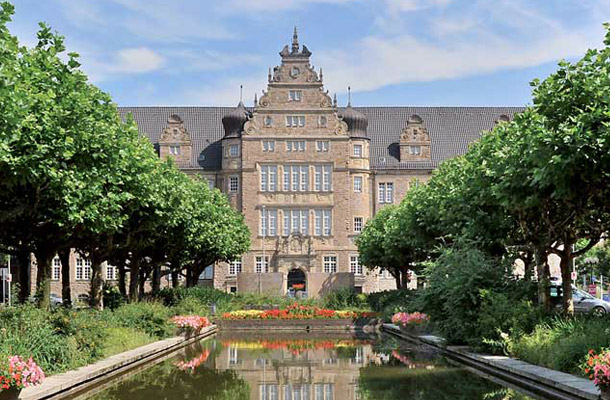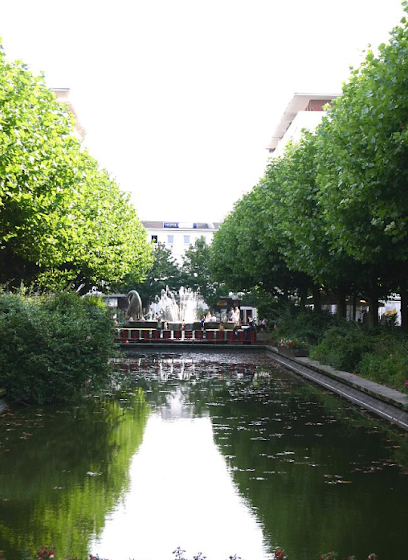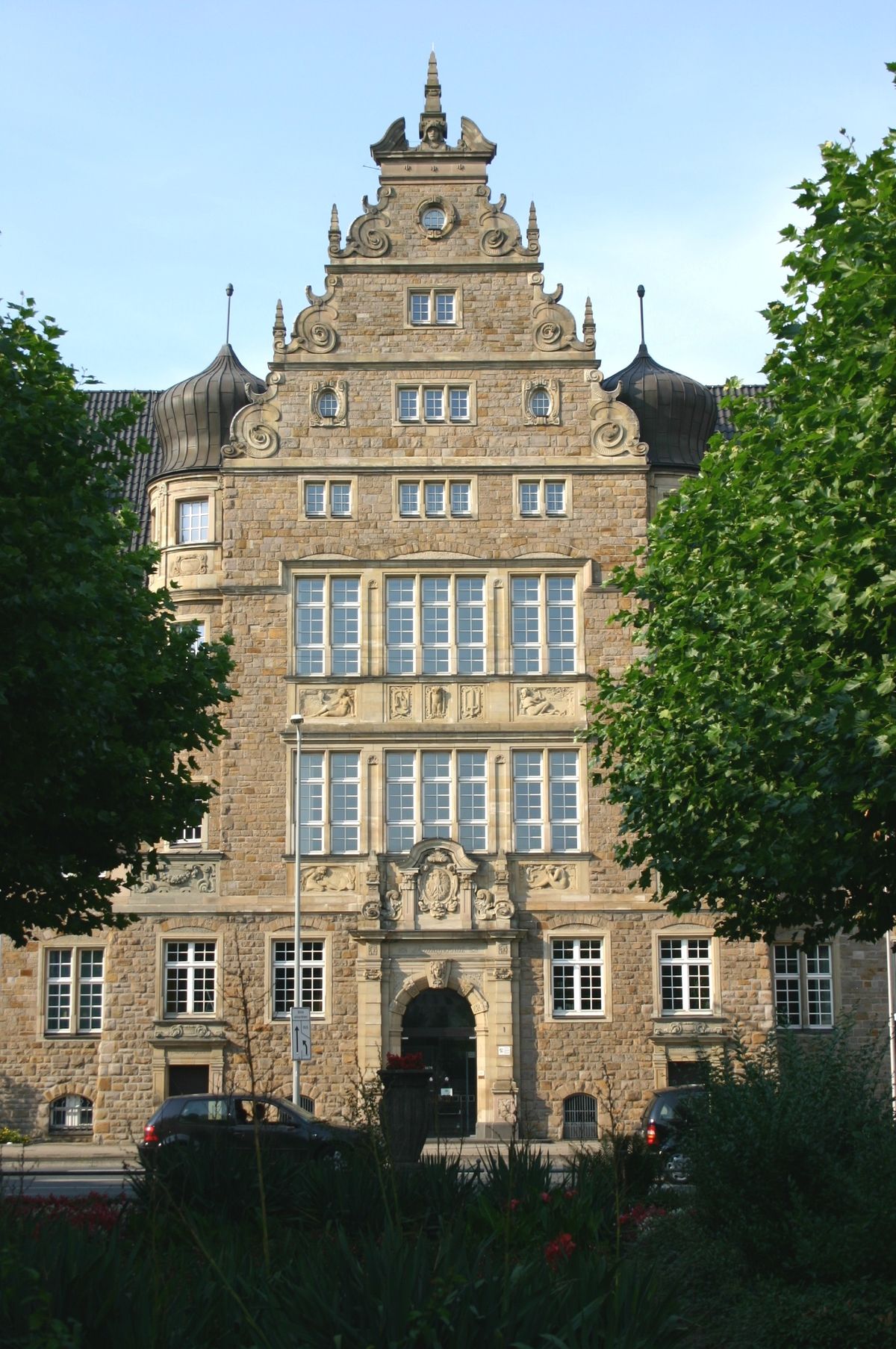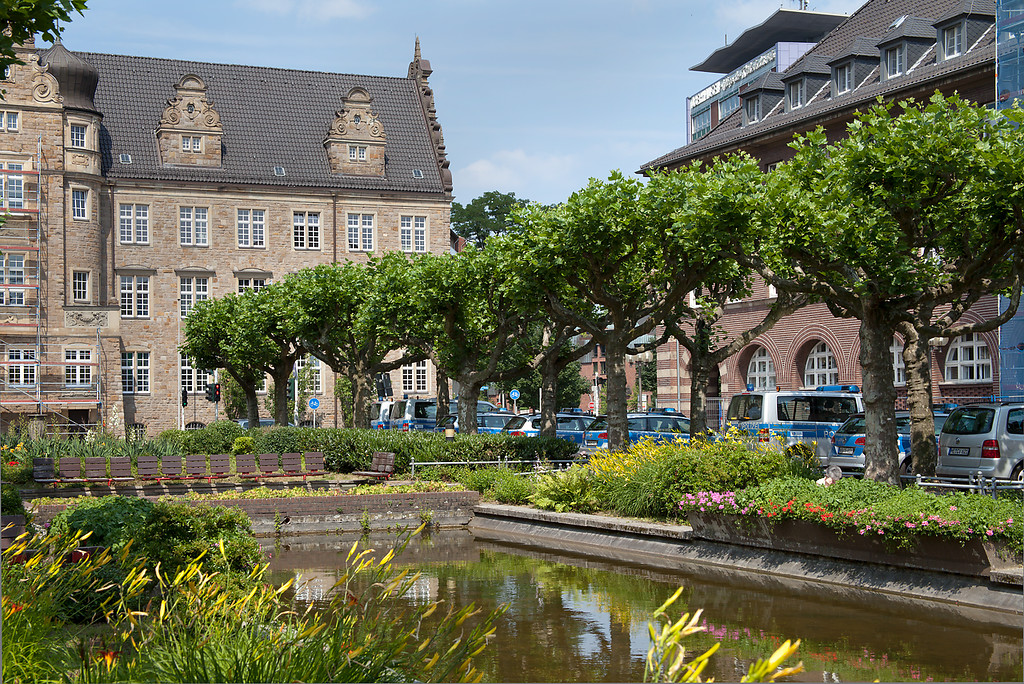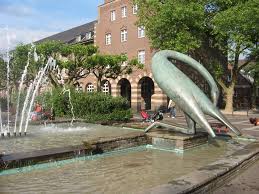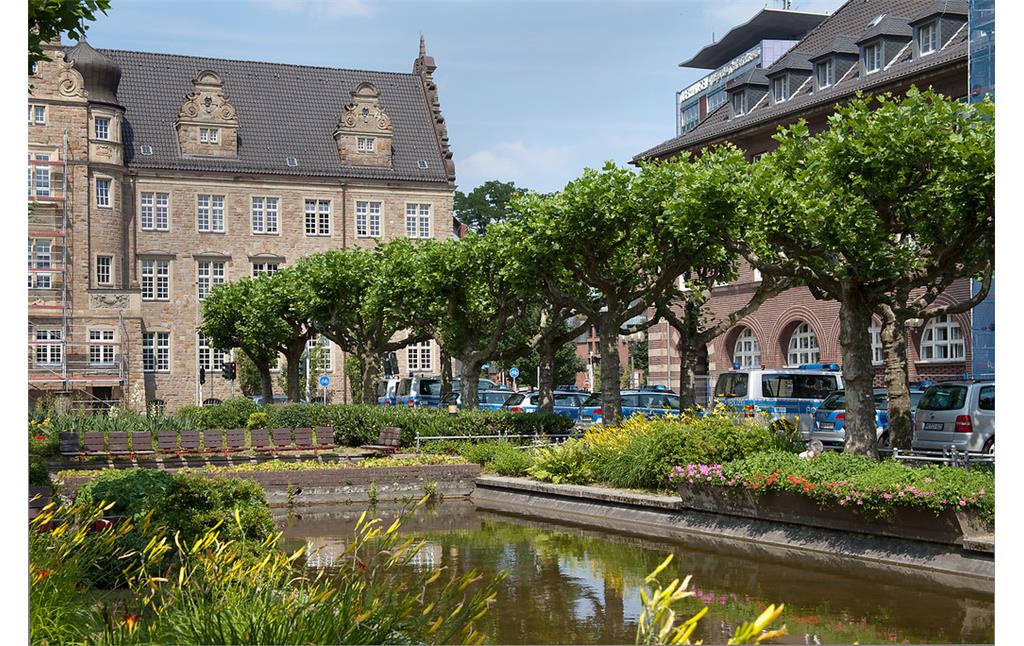On the area of today's place was from 1854 to 1902 the premises of the Styrumer Eisenindustrie AG, which filed for bankruptcy in 1901. After the demolition of the operating buildings, the city did not want to allow a new industrial settlement, as it saw this fallow area as an important link between the station, the city hall district and the Altmarkt. The idea to create at this point the desired new station building with a representative station forecourt, was soon dropped again because the railway administration did not want to participate in this project. Instead, built on the northern edge of the open space in 1907 completed district court, a historicizing building in the style of the neo-Renaissance. The previously created Schmuckplatz, from the star-shaped broad streets, initially received the name Kaiserplatz. During the period of the Weimar Republic, not only was there a renaming of the square (now an industrial center), but also a redevelopment of the town planning. The diagonal leadership of the streets, which was not compatible with the dominating in the surrounding rectangular grid system was abandoned, and the new shape of the square approached the defining for the Oberhausen 1920s rectangular and strict geometric basic shapes. The approximately 180 meters long and 50 meters wide square was now flanked on both sides of new public buildings, which were designed by draftsman Eduard Jüngerich and the city architect Ludwig Friday between 1924 and 1927 in the style of brick expressionism. These include the police headquarters, a branch of the Reichsbank (later Landeszentralbank) and the municipal finance and cadastre office. During the Third Reich, it was renamed Adolf Hitler Platz, which was reversed in 1945. Since then, the name Friedensplatz has been used. In 1955, the square also received a structural completion on its southern side of the head by the Europahaus designed by Hans Schwippert, a twin tower complex with living and business premises and a hotel area.

